Wearever Zenith With Sterling Silver Cap Band c. 1943
by Jim Mamoulides, August 4, 2023
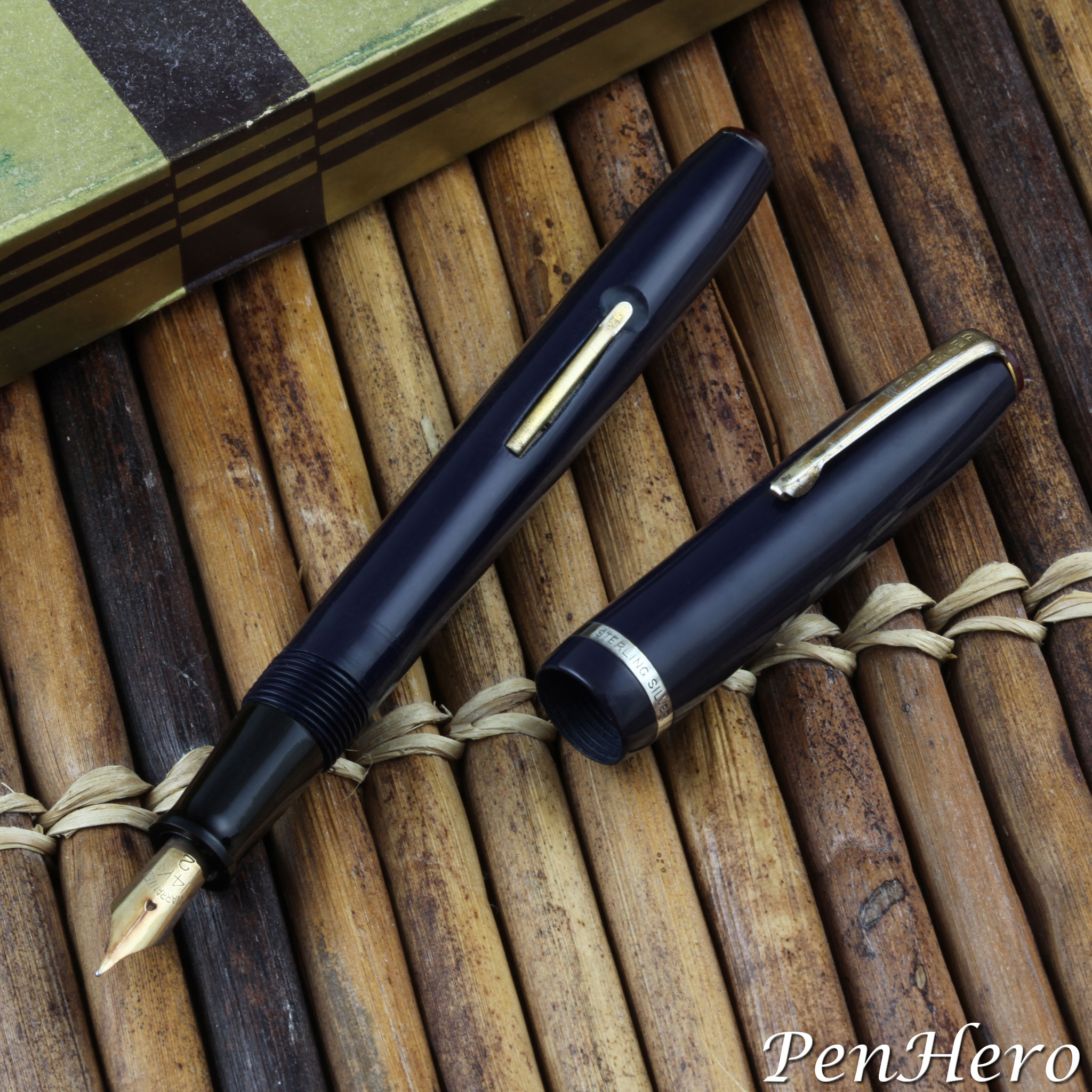 Wearever Zenith with sterling silver cap band c. 1943
Wearever Zenith with sterling silver cap band c. 1943
The Zenith of Zeniths
Since I started collecting fountain pens, I have accumulated quite a few Wearevers. David Kahn, Inc., of North Bergen, New Jersey, the maker of Wearever, Pioneer, and other brands, according to the company’s own advertisements and catalogs, started business in 1896. In many ads in the 1940s the company declares itself “America’s largest fountain pen manufacturer.” It focused on the value priced segment, where volume production and low costs matter. I don’t have fountain pen production numbers for the USA in the 1940s, but just from the number of Wearevers I have turned up over the years, the company must have certainly made a lot of pens. And most of them were cheaply made and it shows in fit, finish, and how well they survived. Many Wearevers are junk pens, and it shows. On the other hand, some are actually decent and write well. Then there are the curiosities. This Wearever Zenith is one of them.
At first, this navy blue Wearever Zenith lever fill fountain pen seems like any shown in 1943 to 1946 Wearever advertisements. The Zenith was a higher end lever fill fountain pen for David Kahn, Inc., featuring a 14 karat gold nib and selling $1.95 and $2.75 in a boxed set with a matching pencil. In 1943 the pen was offered in black, gray, maroon, blue, and green.
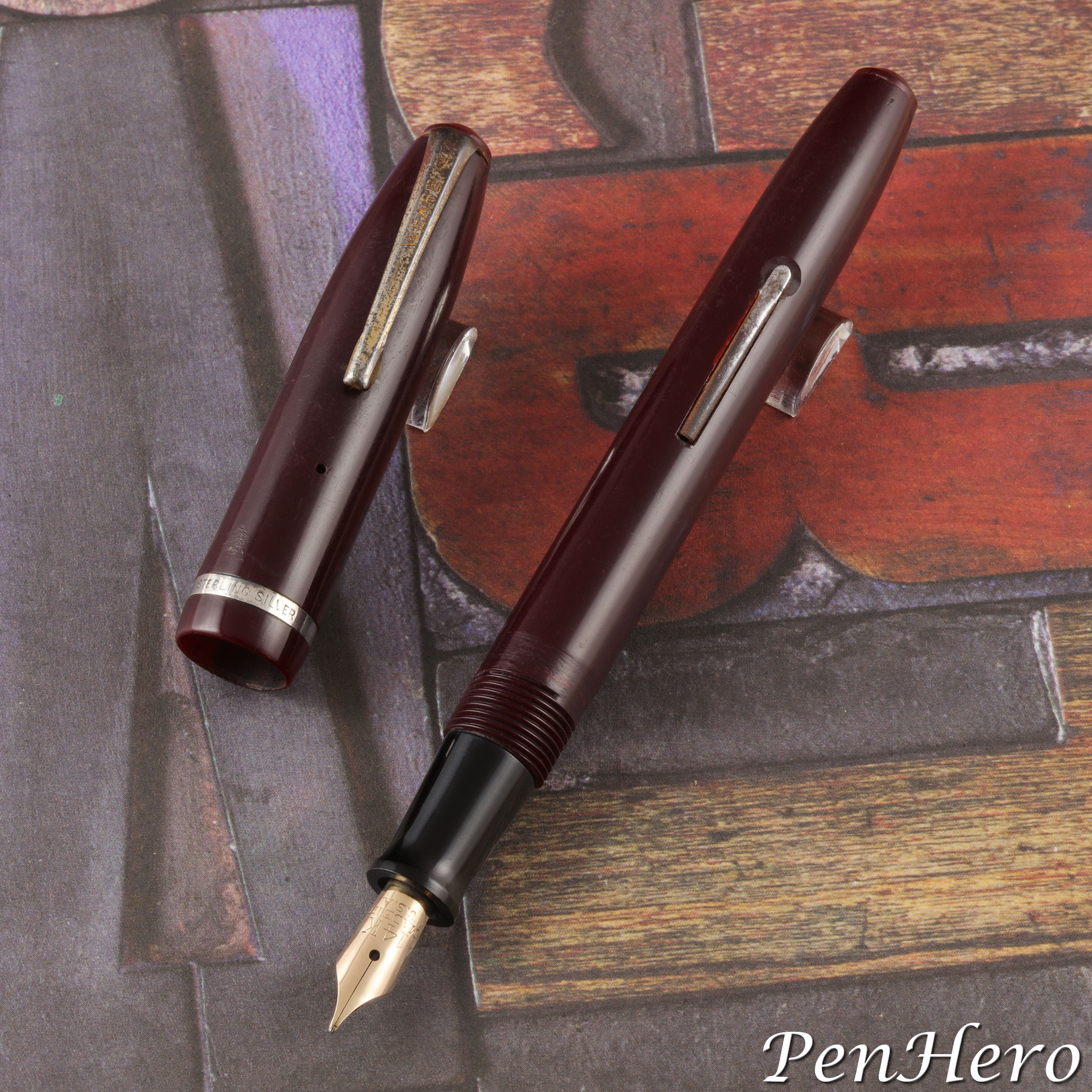 Wearever Zenith with sterling silver cap band c. 1943
Wearever Zenith with sterling silver cap band c. 1943
This Zenith example has all the typical features of that pen, except one. It’s about 5 5/8 inches long with lightly gold plated trim, a WEAREVER stamped washer clip, “ruby” colored cap and barrel end “jewels,” “WEAREVER” over PAT. U.S.A next to “Zenith” next to NORTH BERGEN over NEW JERSEY stamped on the barrel, a 14 karat gold nib, and a clear “C-Flow” feed. The exception is the cap band. It’s silver and stamped STERLING SILVER.
The cap band raises questions. Why would David Kahn, Inc. make a Wearever Zenith with a sterling silver cap band? Was this a regular or special model? When was it made? I’ve wondered about this for years and recently was able to sift through a trove of 1940s Wearever advertisements and believe I found the answer.
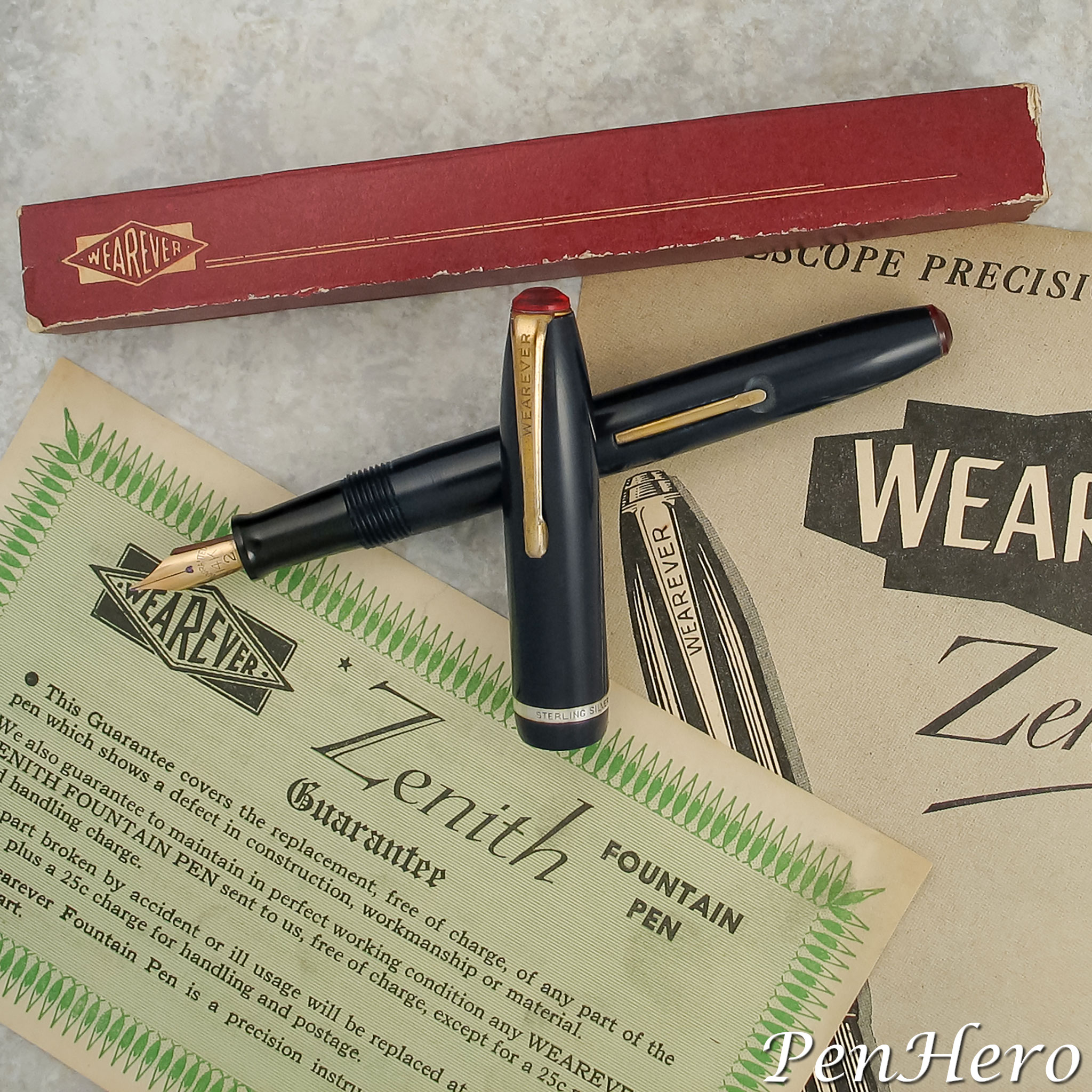 Wearever Zenith with sterling silver cap band c. 1943
Wearever Zenith with sterling silver cap band c. 1943
Advertisements for the Wearever Zenith from David Kahn, Inc. only appear from 1943 to 1946. I found no company advertisements that show or describe a Zenith with a silver cap band. Is this a dead end? I found no company Wearever ads in 1942. The earliest I found was in the May 1, 1943 Saturday Evening Post. An ad in the October 9, 1943 Saturday Evening Post provided the clue that inspired the rest of my search. All the company ads I found in 1943 feature the Zenith only. In order to explain to customers why so few of the advertised pens were available, the company wrote, “Available in limited quantities, since war needs come first.”
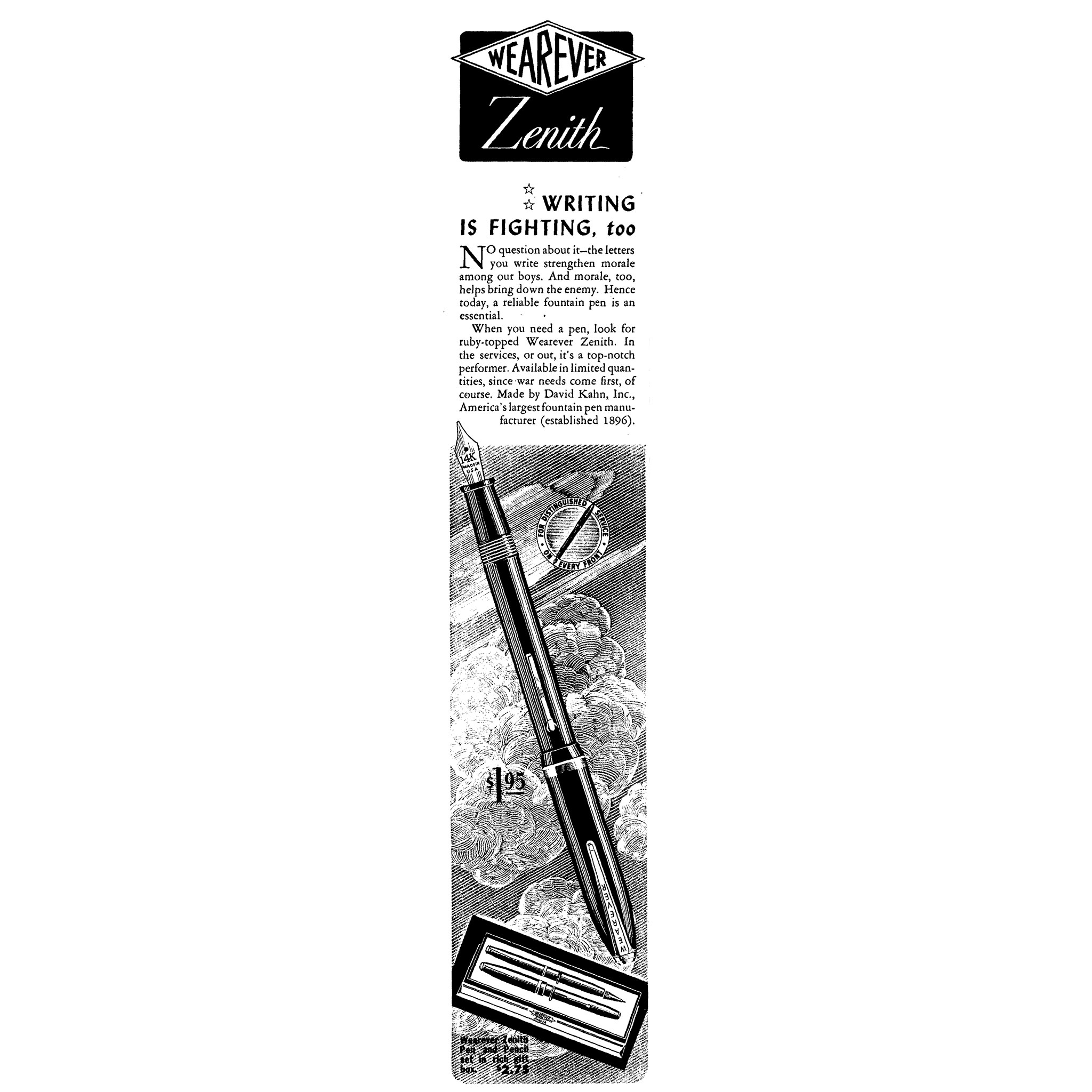 Advertisement, Collier's, December 25, 1943
Advertisement, Collier's, December 25, 1943
Soon after the United States entered World War II the government began to redirect manufacturing and raw materials toward the war effort. As a result, many consumer products saw major changes in availability as manufacturers shifted production to military goods. Sheaffer, for example, made communication plugs, artillery fuses, automatic radio tuning heads, and aerial bomb fuses. David Kahn, Inc. does not disclose what their quotas or directions were, but pen companies did continue to make pens and pencils as they were needed in the armed forces and were under quota for the general public. Steel, aluminum, and brass were restricted. Brass was, and still is, a significant base metal for fountain pen and pencil parts. There are many examples of war time pens that show silver underneath worn gold plating instead of the normal and expected brass.
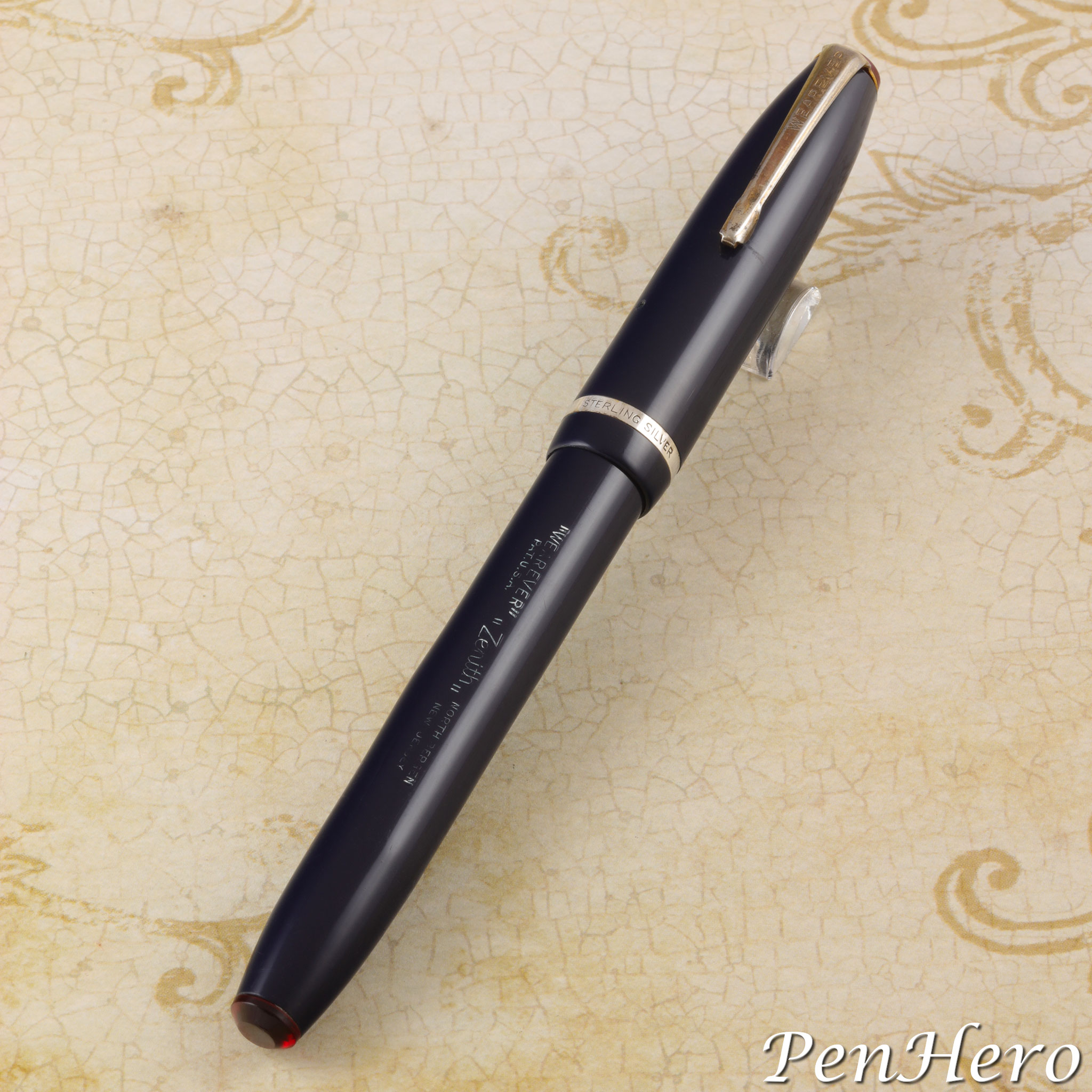 Wearever Zenith with sterling silver cap band c. 1943
Wearever Zenith with sterling silver cap band c. 1943
Since the Zenith was introduced during the war, it would be no surprise to find silver parts. What’s unusual is the cap band is called out as sterling silver by the stamping. Was there a Zenith intentionally promoted as such? I was able to find three dealer advertisements that call out the “silver band” feature with the earliest appearing in the Kansas City Times on September 8, 1943. The other two were in St. Louis, Missouri and Des Moines, Iowa. In each case, the “silver band” Wearever Zenith sold at the same $1.95 price. If this was a common feature, why not call it out in the company ads?
 Wearever Zenith with sterling silver cap band c. 1943 - nib detail
Wearever Zenith with sterling silver cap band c. 1943 - nib detail
Unlike today, selling pens in the 1940s was a personal sale at a retailer. Customers could expect to handle and test pens before they bought one. I imagine, at least in the Midwest where these ads appear, the Wearever sales representative encouraged retailers to call out the sterling silver band as a selling point. I can picture the pitch. “Look! It’s a great value at $1.95 and includes a 14 karat gold nib, but imagine how much classier it is with a free sterling silver cap band? Where else will you get that?”
Since I don’t have any company information on this model, I’m going to skip a formal identification guide and features section and move straight to how it performs.
Performance
I have several Wearever Zeniths. On many trips pen hunting at antique stores over the years I discovered just how common Wearevers are. Most of the pens would be from the 1940s and 1950s, which makes sense considering estate sales would be the source of many pens from that era, filling out the inventories of many antique shops. The most common would be Pennants, but several Zeniths and Pacemakers would also make appearances. As a result, I still have a half dozen or so Zeniths today. During all those trips and including visits to pen shows, I’ve never seen another Zenith with a sterling silver cap band.
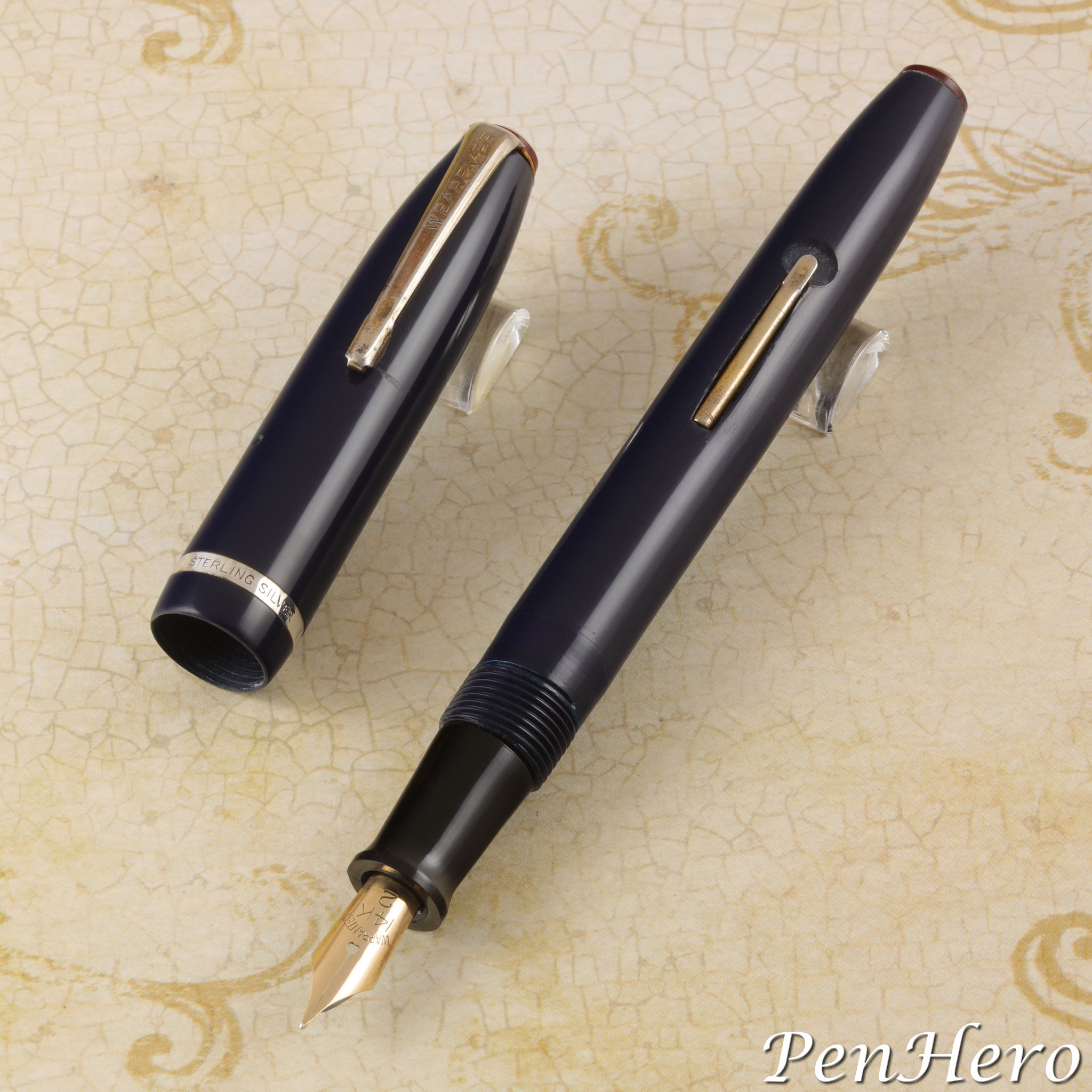 Wearever Zenith with sterling silver cap band c. 1943
Wearever Zenith with sterling silver cap band c. 1943
How does it compare to an ordinary Zenith? Except for the cap band, it’s no different. The fit and finish can best be described as securely but cheaply assembled. The clip is tight, the cap band is flush, the lever works, but the cap top and barrel end pieces are not completely flush and tight together, however they are secure and not loose.
The ink sac has stiffened, and I really wasn’t concerned about putting a new one in, so my writing test was a dip test. It’s a light pen in the hand and the cap posts securely on the barrel. I’m not sure if the cap and barrel are plastic or celluloid, I’m leaning to plastic. The 14 karat gold nib is an even, reasonably smooth writer with a little bit of flex. I’m not sure about the utility of the “C-Flow” clear feed. My guess is the warning it gives that you are running out of ink is limited to what it shows left, meaning quick, refill the pen if you see daylight. The photos were taken over the course of a few years and the most recent show a strong deterioration in the plating both in color and loss. This is typical. Also, the clip can wiggle as the scuff on the cap shows.
The Wearever Zenith with a sterling silver cap band may have only been made during the first year of production, 1943, as I could only find three retailer advertisements that mention the pen having it. David Kahn, Inc. was never shy about calling out features, but no company advertisement I could find from 1943 to 1946 describes this one. I believe a Wearever Zenith with a sterling silver cap band will appeal to two types of collectors, Wearever enthusiasts and novelty collectors. I don’t know how many are out there, but I’ve only seen the two examples shown here. Are they valuable? Probably a premium over an inexpensive ordinary Zenith. Could it be a decent daily user? If the nib is tuned the way you like it, yes. If you have one in one of the other colors, please let me know!
References
Advertisement, Akron Beacon Journal, November 11, 1943, page 22
Advertisement, Collier's, October 2, 1943, page 49
Advertisement, Collier's, October 30, 1943, page 67
Advertisement, Collier's, December 4, 1943, page 49
Advertisement, Collier's, December 25, 1943, page 62
Advertisement, Des Moines Tribune, November 25, 1943, page 9
Advertisement, Kansas City Times, September 8, 1943, page 7
Advertisement, Saturday Evening Post, May 1, 1943, page 52
Advertisement, Saturday Evening Post, May 15, 1943, page 73
Advertisement, Saturday Evening Post, May 29, 1943, page 64
Advertisement, Saturday Evening Post, June 12, 1943, page 95
Advertisement, Saturday Evening Post, August 21, 1943, page 59
Advertisement, Saturday Evening Post, September 18, 1943, page 67
Advertisement, Saturday Evening Post, October 9, 1943, page 72
Advertisement, Saturday Evening Post, November 6, 1943, page 92
Advertisement, St. Louis Post Dispatch, December 2, 1943, page 9A
Advertisement, The Tampa Times, September 15, 1943, page 3
"Sheaffer Presents: Right to the Point" short film produced by Sheaffer Pen Company, 1943
Interact
Comments on this article may be sent to the author, Jim Mamoulides


